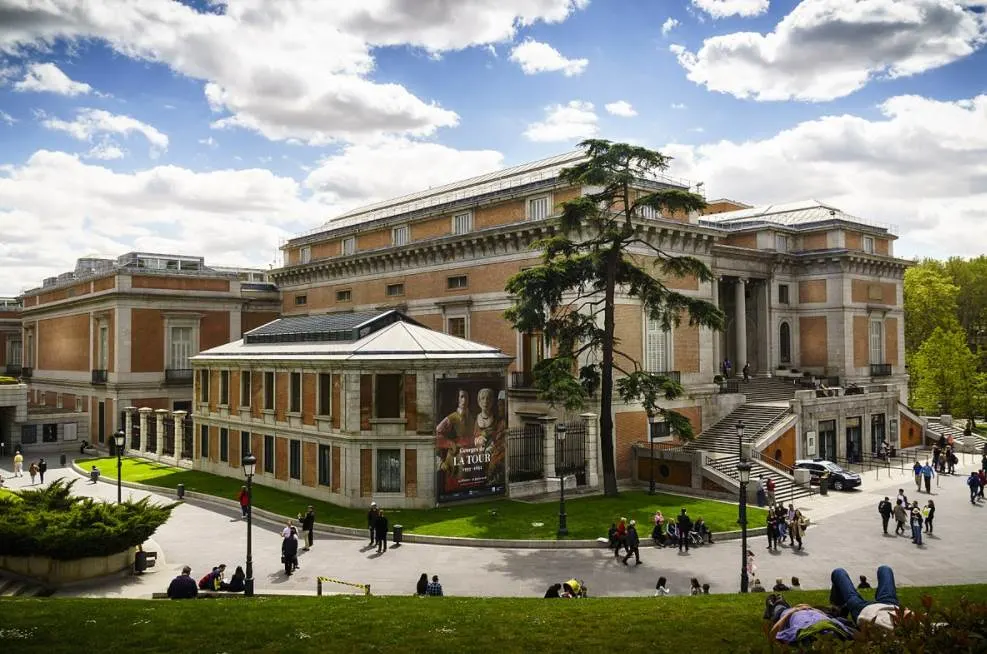When Peter Paul Rubens (1577-1640) approached the final decade of his life, he had the luxury to create works of art that he would never sell.
That’s because he had dozens of people working in his workshop to complete the sketches he made for his clients. Yes, fine art was produced on a massive scale in his Antwerp studio now called the “Rubenshuis” in the 17th century.
In this article, we’ll take a closer look at some of the most interesting facts about “The Three Graces,” a remarkable work of art by Rubens for several reasons.
1. It’s uncertain when Rubens painted The Three Graces
Peter Paul Rubens got married for the first time in 1609, shortly after returning from his extended stay in Italy where he studied the Renaissance masters of the 15th and 16th centuries.
The first wife of the Baroque art was a woman named Isabella Brant (1591-1626), the daughter of an important city official of his hometown of Antwerp. It was a happy marriage but unfortunately, his wife died at the young age of 34 due to a plague that swept across the Low Countries that year.
Just 4 years later, he married the 16-year-old niece of his wife, a girl named Hélène Fourment (1614-1673). It’s believed that Rubens painted “The Three Graces” sometime during the first 5 years of his second marriage between 1630 and 1635.
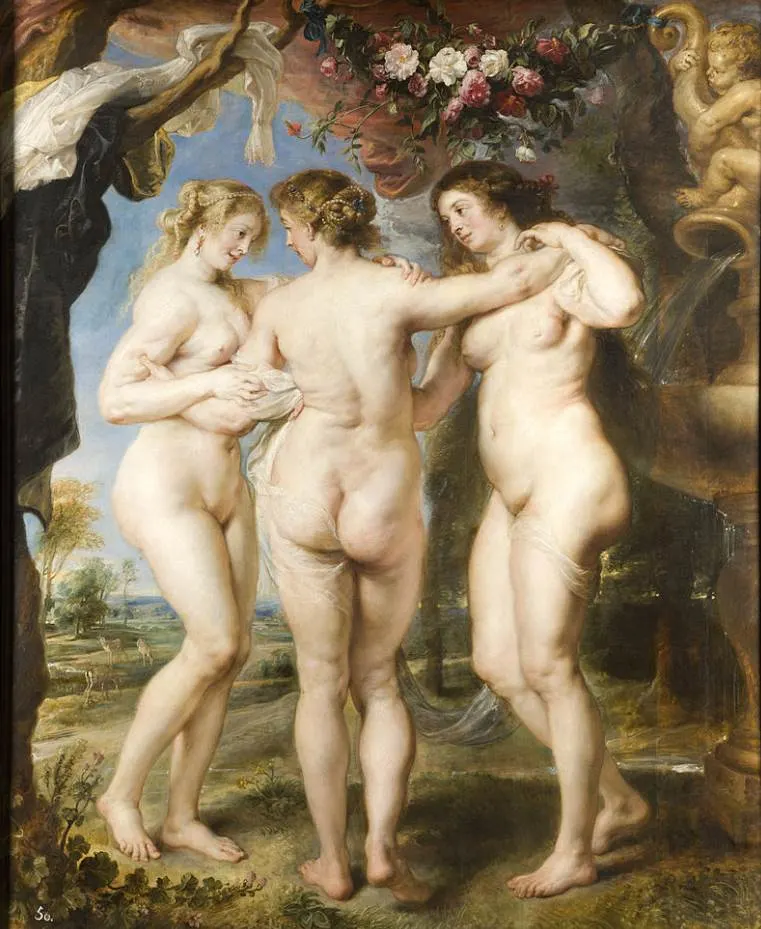
2. It depicts 3 popular figures in Greek mythology
The Three Graces, also known as “Charites,” are 3 female figures in Greek Mythology. They represent beauty, love, and charm, to name just a few of the qualities they are associated with.
Although they are minor deities in Greek Mythology, they were often the subject of artworks throughout history, and especially during the exuberant Baroque era.
What’s remarkable about the Charites is that they were often portrayed completely naked (or scarcely dressed), a sheer contrast to the finely dressed women appearing in works of art created in Classical Greece.

Some of the most famous works of art in which they were depicted are the “3 Graces” by Raphael, the 3 graces featured in “Primavera” by Sandro Botticelli, and the Three Graces, a sculpture by Antonio Canova.

3. It’s probable that the left woman portrais his second wife
It’s hard to deny the fact that the resemblance between the woman depicted on the left and Hélène Fourment is striking. The woman is being welcomed by the other 2 women on the righthand side of the work.
This theory is strengthened by the fact that this particular painting never left his studio until he passed away. He didn’t make any sketches as well, something he always did to show a patron how the final work would look like.
If the woman is indeed his new young bride, it’s also possible that he created this for this purpose, something he did for his first marriage as well with the “Honeysuckle Bower,” a self-portrait together with his first wife.

4. His young wife inspired many other paintings of the artist
He portrayed himself as the ultimate gentleman in the Honeysuckle Bower. His first wife, Isabella Brant, was portrayed wearing nice jewelry and finely dressed.
Even though he painted his new young wife several times wearing clothes, he also painted her completely naked while accentuating her voluptuous figure. This style during the final decade of his life is often associated with his entire oeuvre as well.
The beautiful Hélène was often the subject of his paintings and often served as the model for immense religious and mythological paintings as well.
Others also noted her beauty. A man called Cardinal-Infante Ferdinand of Austria, who was the Governor of the Spanish Netherlands at the time, once remarked:
Undoubtedly the most beautiful one may see here.
Gaspar Gevartius, a famous poet and personal friend of Rubens, once said:
She is Helen of Antwerp, who far surpasses Helen of Troy.
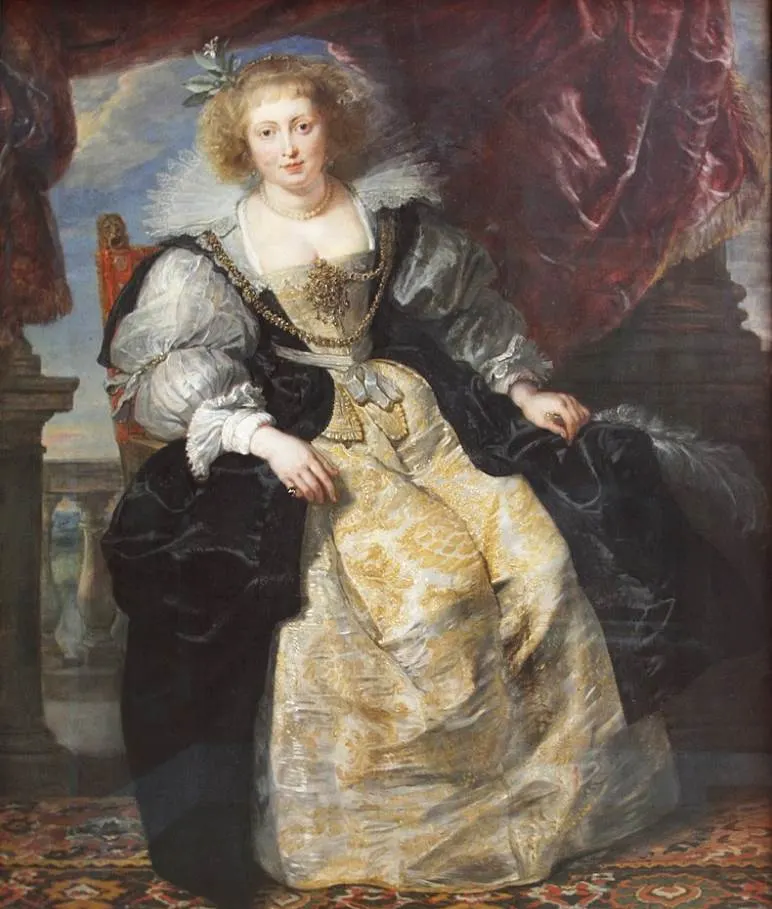
We don’t know whether or not Rubens tried to integrate his second wife into the mythological story of the Three Graces, but we do know for sure that the 3 depicted women represent the 3 ancient Greek goddesses.
The names of the 3 Charites are Aglaea or “Shining”, Euphrosyne or “Joy”, and Thalia or “Blooming.” The red and white roses hanging from the branch of a tree and the fountain on the are references to blooming.
The females are lit and appear to be dancing in a luscious landscape in the background which stretches as far as the eye can see, references to joy and shining. The fountain is decorated with a statue of Cupid, a sign of love.
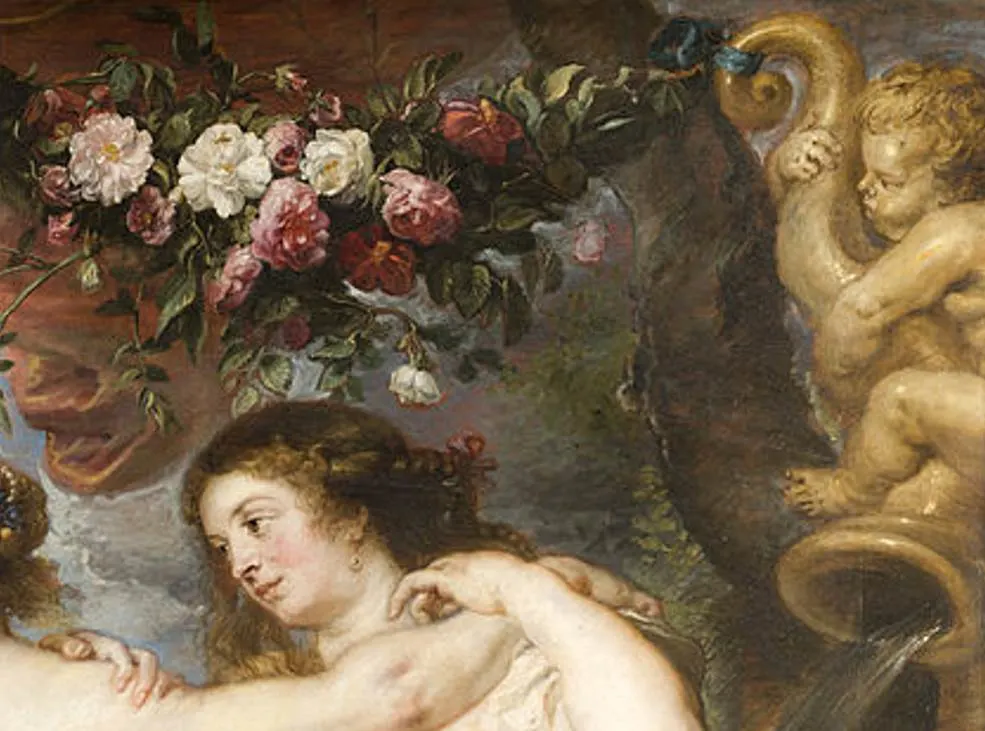
6. The clothes hanging from a tree branch are contemporary ones
Another element that makes us believe that Rubens intended to portray his wife as she is entering the realm of the goddesses is the clothes that are hanging on the branch of the tree in the top left corner.
There is only one set of clothes and these aren’t the typical ancient clothes worn by women in Ancient Greece, but clothes worn by women living in the 17th century.

7. How big is the painting?
Just because Rubens painted this work for his collection doesn’t mean that he messed around with the scale in which this work was painted. It’s just as big as any other monumental work of art he produced for some of the most important patrons in Europe.
The women are depicted as life-sized and the oil painting has dimensions of 221 × 181 centimeters (87 × 71 inches).
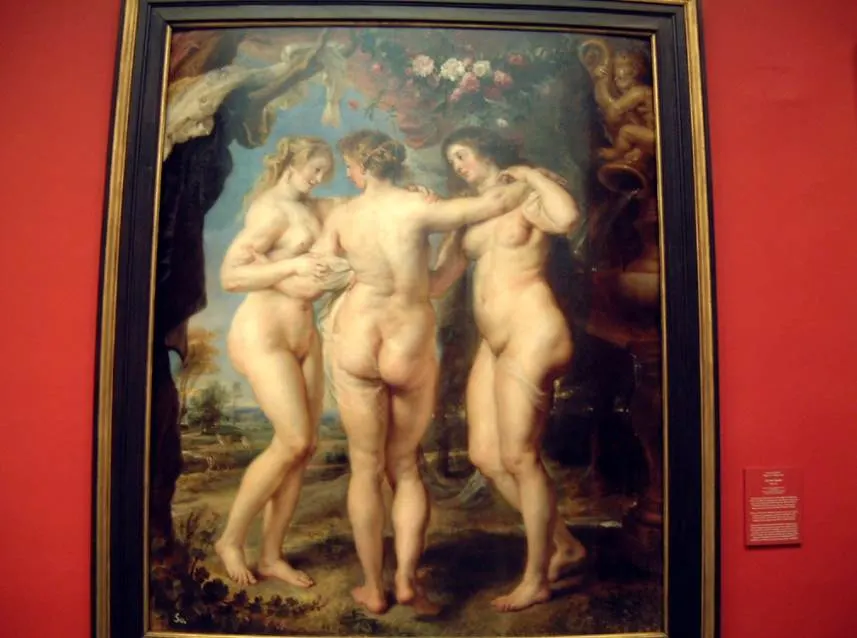
8. Where is the painting located?
The painting remained in the collection of the artist, most probably decorating one of his private chambers until he passed away in the year 1640. It was purchased by Philip IV of Spain (1605-1665), to decorate this man’s private chambers (nudity as frowned upon in Spain at the time).
Philip IV of Spain was a great patron of the arts and had Diego Velázquez (1599-1660 working for him. When he died, most of the works he acquired and commissioned were moved to the Royal Alcázar of Madrid.
The painting was lucky to survive the 1734 fore at the Alcázar and eventually ended up being moved to the Royal Palace of Madrid. it finally entered the collection of the Museo del Prado in Madrid in the 19th century where it still resides today.
